Dr. Brad Muller
Transverse bands or transverse waves:
Lines of clouds that form across a jet stream, perpendicular to (transverse or across) the jet flow.
Transverse bands are important because they can be associated with upper tropospheric turbulence.
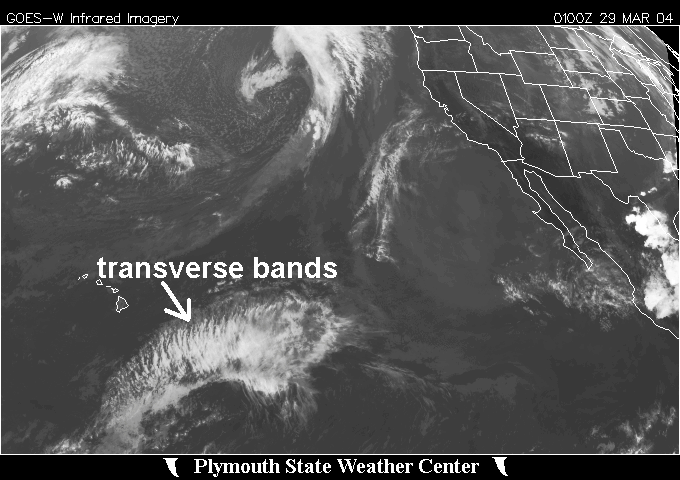
They look a little like mountain waves, but there are some key differences:
a. the bands or waves are somewhat chaotic looking, not coherent like mountain waves; i.e. a series of mountain waves has relatively even spacing and there shape tends to be related to terrain features, whereas transverse bands have uneven spacing and their shape does not repeat downstream.
b. transverse bands move along with the jet flow whereas mountain waves tend to be stationary or move only very slowly. This can be seen best in fast moving image loops.
c. mountain waves must be over or downwind of mountain ranges; transverse bands accompany the jet stream, wherever it is, often out over the ocean.
Meteorologically, transverse bands typically indicate strong vertical wind shear and turbulent flow usually associated with a jet stream. Below is a 300 mb map showing the jet streak in the subtropical jet southwest of Hawaii associated with the transverse bands:
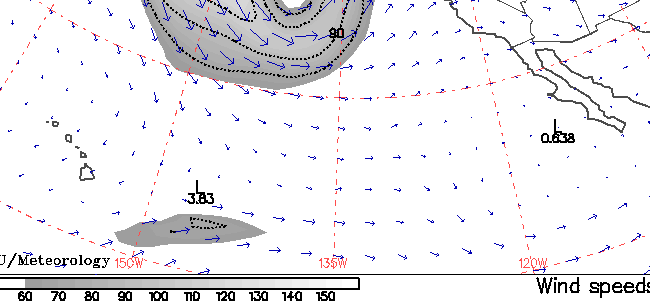
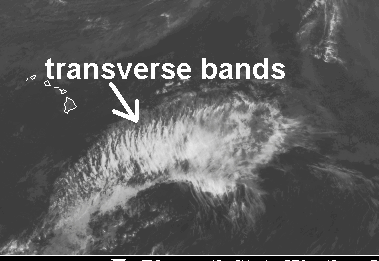
Transverse bands may show up in IR, water vapor, or visible imagery but often are best seen in enhanced IR because waves in the cold jet stream level clouds stand out more. The following series shows simultaneous images and loops of transverse bands over Mexico in IR, VIS, and WV imagery.
IR:
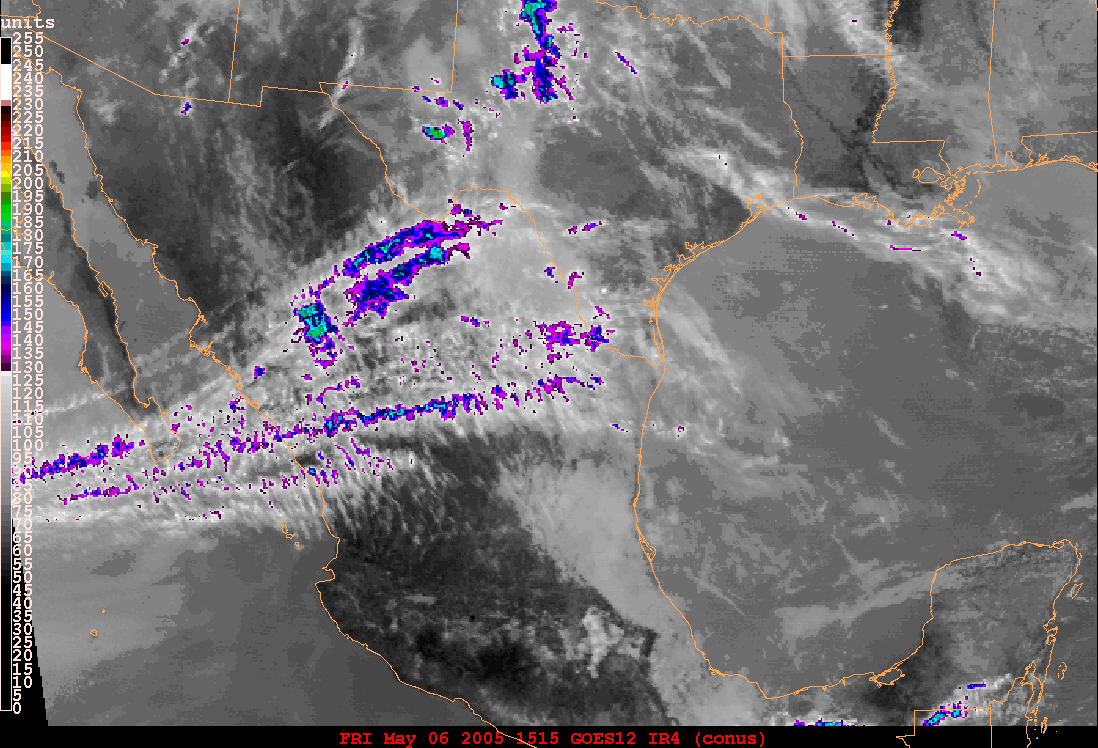
WV:
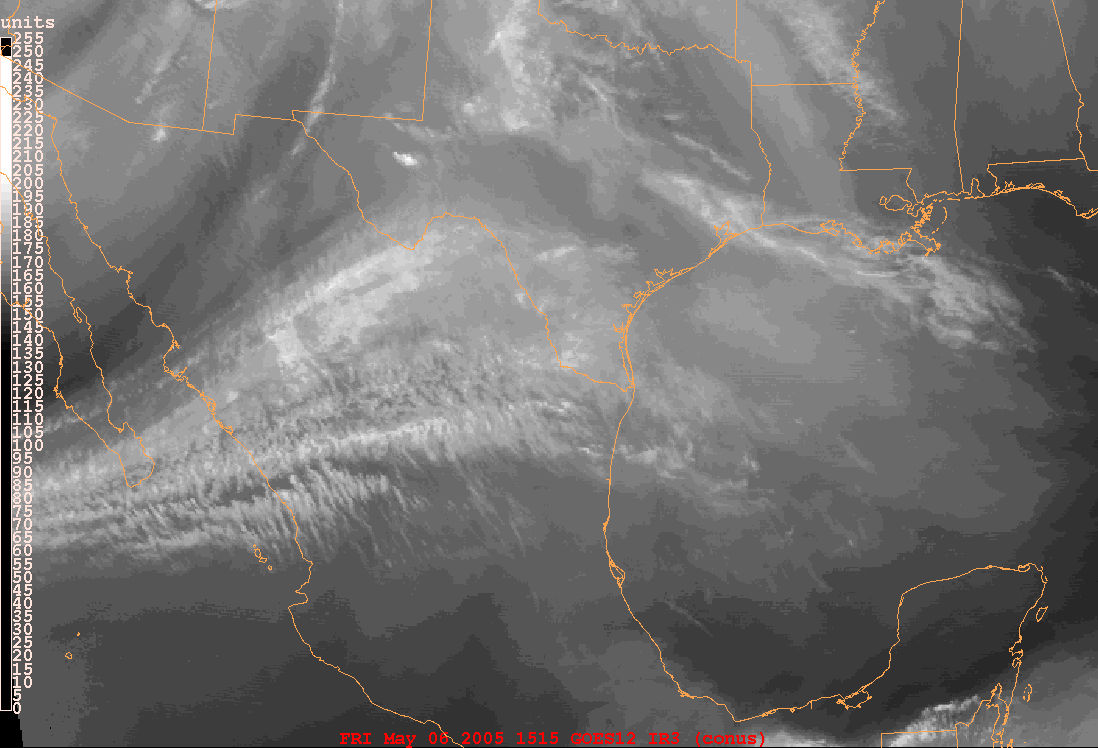
VIS:
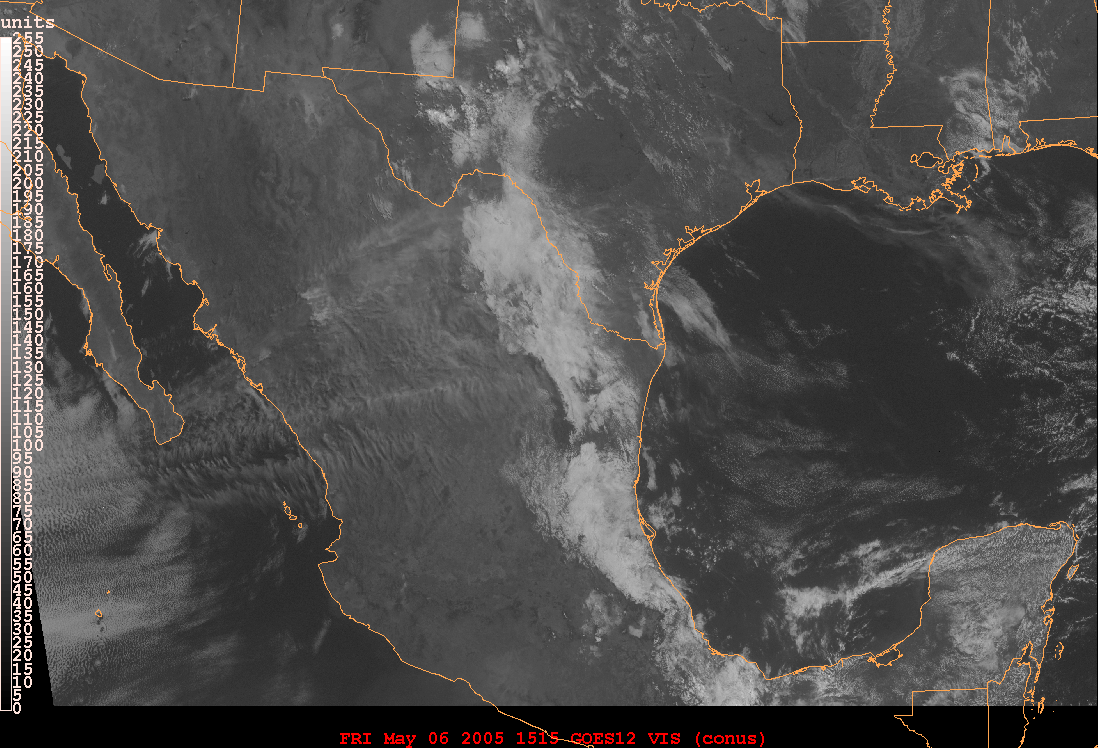
IR Loop
WV Loop
VIS Loop
Another example from the Gulf of Mexico/Florida IR, 10-08-2013:
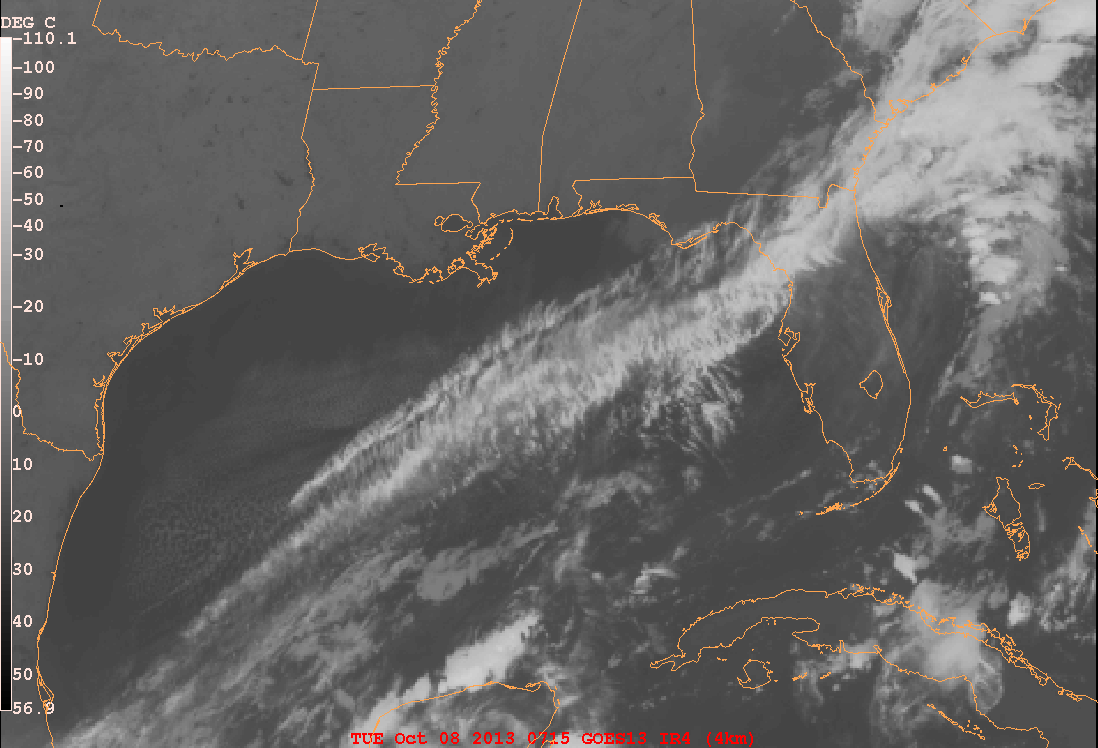
Transverse bands, Gulf or Mexico/Florida 10-08-2013 IR Loop